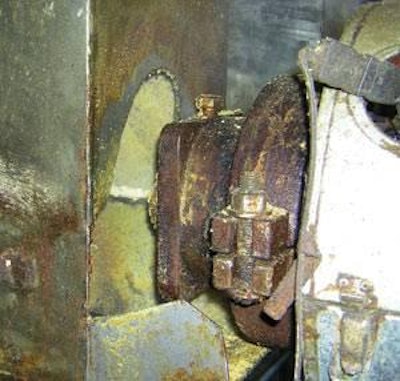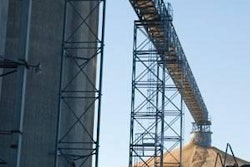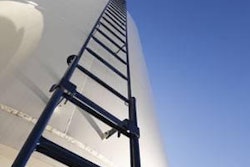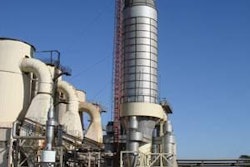
Every day at Agricultural Commodities, better known as AgCom, thousands of bushels of soybeans are processed by pressing, the oil used for energy and the byproduct further processed into poultry feed. It's an enterprise that has served the New Oxford, Pennsylvania, USA, company well, except for the abrasive nature of the bean.
Press rebuilds
Running that many soybeans through the oil press was causing abrasive problems on the oil press parts, forcing AgCom to continually rebuild the presses several times a year. "I would say that soybeans are more abrasive than a lot of the products," says Barry Keller, plant manager of the AgCom grain division. As significant as the cost of the repair and downtime was, the loss in product added to the trouble. The amount of oil that was extracted began to decrease as the parts would wear, creating a fluctuation in the protein levels needed for the feed.
To combat the abrasion issues, and to reduce the downtime, maintenance costs and labor associated with rebuilds, AgCom decided to install wear-resistant cladding to the affected parts of their oil presses. AgCom's grain division secured some information and a product sample from Conforma Clad following a trade show and began by cladding just a few parts for their oil presses.
"When we first started out, we did one or two parts," Keller explains, "and then we saw the benefit of it and we just kept cladding more parts on the line." AgCom had Conforma Clad completely fabricate some parts of the oil press, while other parts were manufactured elsewhere and then cladded.
Processing 6,000 bushels of soybeans a day, or about 1.5 million bushels a year, AgCom needed to avoid the cost and downtime of continuously rebuilding presses and the constant variations in the oil and protein levels.
To take the press down, rebuild it and get it back up to operating capacity takes about eight hours, a whole shift, according to Keller. And if parts stick, they need to be cut off and that involved even more labor, downtime and cost.
AgCom has a spare oil press that can continue processing while a rebuild is done on another press so that some operation losses can be avoided, but the cost and labor for rebuilds was still high, about US$1,000 just in the tear down time and labor, Keller says. Two of the three oil presses in the grain division are now completely equipped with cladded parts, including cladded pressure worms, choke plates and tapered collars. The third oil press is smaller, Keller says, and may eventually be taken out, so it has not been cladded.
Cladding improved longevity
The cladded parts have been installed for almost three years and have lasted about 2½ times longer than the uncladded parts, according to AgCom. Not only have the parts lasted longer, but the company says they have also provided a more consistent oil level.
"What it does for us, is we stay more consistent in the fat level, that's the big one," Keller stresses. "And the parts are definitely lasting longer." Before the soybeans go into AgCom's oil press there is about 18 percent oil content. After they are pressed, they contain about 7 percent, with the press removing the other 10 to 11 percent of oil. As the parts begin to wear, less and less oil can be removed in the press.
Keller says oil levels were tested every week and prior to the cladding installation, when levels started inching up from 7.5 to 8.5 percent, it was a signal that the company needed to do a rebuild. But with cladding on the parts, he says the oil level consistently runs no higher than 7 to 7.5 percent and is very consistent.
Consistency in what is one of the most valuable ingredients in the company's feed product is significant, and Keller adds that if the feed comes out of the press at the optimum protein level, AgCom is better able to meet its goal of producing natural, high quality feed without additional additives that would threaten the feed's marketing as natural.' When the feed mill produces poultry feed, it markets it as all-natural feed since there are no chemicals involved, Keller clarifies. Poultry producers can then reap benefits as well, advertising poultry meat as natural bird' at the meat market. A consistent protein level helps them to continue successfully manufacturing that product.
AgCom estimates that cladded parts last more than twice as long as uncladded parts in their facility.
"Because of the cladded parts lasting 2 ½ times longer, it's a good bit of cost savings," Keller states. "A safe number is probably US$12,000 over 2½ years."





.jpg?auto=format%2Ccompress&fit=crop&h=167&q=70&w=250)











